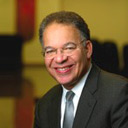Hardly a month goes by without a new headline bemoaning the phenomenon of childhood obesity or touting new signs of progress in combating the epidemic. “Obese kids face higher risk of heart disease in adulthood,” reported the Wall Street Journal as recently as December.2 “Schools found improving on nutrition and fitness,” according to the New York Times last October. 3
The authoritative Robert Wood Johnson Foundation argues that childhood obesity is one of the most urgent and serious health threats confronting our nation. The epidemic afflicts and endangers members of every race and ethnic group, as well as all income levels and in every region of the country. During the past four decades, obesity rates have soared nearly fivefold among children between the ages of 6 and 11.4 More than one-third of children and adolescents are overweight or obese. In raw numbers, that’s nearly 25 million kids and teenagers. As the Foundation warns, if our nation fails to reverse this ominous trend, we’re in danger of raising the first generation of American children who will live sicker and die younger than the generation before them.
Childhood obesity demonstrably increases the risk of coronary heart disease, high blood pressure, kidney disease and related serious illnesses. The damage doesn’t even wait until the overweight youngsters reach adulthood. Diagnoses of early hypertension and full-blown high blood pressure started creeping up among children and adolescents beginning in late 1980s, rising among American children for the first time in decades.5 As Elizabeth Nabel, director of the National Heart, Lung and Blood Institute, observed:
“Typically in the past we didn’t begin to see high blood pressure until someone was in their 30s or 40s. This is another piece of evidence suggesting that the obesity epidemic will likely turn into a heart disease epidemic.” 6
The well-documented culprits include poor diet, insufficient exercise and genetics.7 Researchers are focusing increasingly on other social and physiological influences that exacerbate these familiar explanations. For instance, they are examining why it’s difficult to maintain diets over time and why dieters recidivate so frequently. Also, obesity can be socially contagious, according to the New England Journal of Medicine.8 In other words, the odds of becoming obese are much higher among people with obese friends. I also hunch that those pervasive images of obese hip hop performers bedecked in “bling” in rap videos on MTV and BET reinforce the message to impressionable young people that obesity is cool.
The way the healthcare system by and large works hardly helps. Prevention, promotion of healthy lifestyles, and management of chronic disease are second class citizens under the healthcare finance system. As Jeanne Lambrew, a senior fellow at the Center for American Progress, observes, delivering preventive services is time-consuming. It would be a challenge even for dedicated primary care physicians to devote the desired amount of time to prevention.9 To make matters worse, insurers often decline to cover these services and the supply of physicians who are trained to emphasize prevention is shrinking. Although prevention has long been considered a cornerstone of pediatrics, it appears that pediatricians focus less than they should and could on preventing their young patients from becoming overweight.10 As Sonia Caprio observes in the Future of Children:
“Most pediatric primary care providers are not trained to provide the extensive counseling on nutrition, exercise, and lifestyle changes that is required to treat obesity, and most a pessimistic that treatment can be successful. Most also have insufficient time and attention to dedicate to the obese child, a problem compounded by lack of reimbursement by their-party payers. Pediatricians also lack support services, especially access to mental health professionals, nutritionists, or exercise physiologists. And they are frustrated by insufficient patient motivation and a lack of parental concern.” 11
Thus is it comes as no surprise, for instance, that in conjunction with a study conducted by Children’s Memorial Hospital in Chicago, researchers observed that doctors actually calculated a child’s body mass index in only one out of 55 pediatric visits. 12
Two of the most promising opportunities for breakthroughs in healthcare in the 21st century lie at opposite ends of the treatment continuum. At one end, genomics will bring dramatic advances in the identification, diagnosis, treatment and cure of illness and disease. At the opposite end of the continuum, a heightened emphasis on education, prevention, detection, monitoring, and management could forestall the onset of chronic illnesses and keep them from escalating into costly, debilitating and life-threatening diseases.
Given the causes and consequences of childhood obesity, the challenge is to rally the nation’s policymakers, families, schools and healthcare providers to contain and reverse this ominous epidemic. Happily, much encouraging work is well underway. A survey released last fall by the Centers for Disease Control and Prevention found that the nation’s schools have made considerable improvements in nutrition, fitness and health over the last six years. 13 More schools require physical fitness and fewer sell French fries. More states insist that elementary schools schedule recess and school districts like Miami are issuing personalized fitness reports for students that list their abdominal crunches and the pace of their one-mile runs along with their body mass index scores.
Increasing numbers of schools offer salads and vegetables and fewer of them allow bake sales. The CDC reports that 30 percent of school districts have banned junk food from school vending machines, up from 4 percent in 2000. What’s also encouraging is that according to a recent study by the University of Minnesota, school lunch sales don’t decline when healthier meals are served, and more nutritious lunches don’t necessarily cost schools more to produce.14 The Department of Health and Mental Hygiene in New York City has gotten into the act by launching a “Healthy Bodegas” initiative which aims at encouraging neighborhood convenience stores to sell more nutritious food.
The federal government contemplated weighing in with national guidelines that would forbid the sale of candy, sugary soda and salty fatty food in school snack bars, vending machines and cafeteria lines. Not surprisingly, the potential federal guidelines generated intense lobbying and amusing anomalies about what is considered nutritional. Food manufacturers wanted exemptions for chocolate milk, sports drinks and diet soda.15 Jelly beans and Popsicles would be verboten because of their minimal nutritional value.16 But Snickers candy and Dove bars would be acceptable because they contain some nutrients. Some parents complained that the feds are killjoys for frowning on cupcakes even for Halloween and birthday parties. However, the guidelines failed to gain sufficient political traction to be incorporated in the major farm bill destined for Congressional action at the end of last year.17
The campaign to combat childhood obesity extends beyond promoting or legislating healthier eating habits. A legal settlement reached in California construes childhood diabetes as a disability that requires the schools to have trained personnel on site who can assist diabetic children.18 Several other states have enacted legislation that allows non-medical staff in schools to be trained to administer insulin and help students monitor their blood sugar levels. The American Academy of Pediatrics has called on pediatricians to make obesity screening and counseling routine parts of children’s checkups.
In some locales, integrated chronic care models show promise of improving health care delivery and outcomes for families and thus for children. For instance, Inter-Mountain Healthcare in Utah and Idaho operates a cost-efficient, high touch, high tech diabetes prevention/management program that enables endocrinologists to read charts and lab reports at home, supplemented by nurses in clinics who maintain personal contact with patients and stay on their case. On the theory that patients and healthcare professionals need to understand the critical role of lifestyle in preventing and treating disease, there is even a fledgling effort to make so-called “lifestyle medicine” a credentialed clinical specialty and part of basic medical training. 19
Another intriguing approach envisions cadres of community healthcare workers whose backgrounds resemble those of the people they serve and who come from similar neighborhoods.20 The rationale is that socioeconomic compatibility will enable these workers to better reach residents who face cultural, economic or linguistic barriers to accessing and navigating the healthcare system. These community health workers would provide people with information about common diseases and the importance of primary care, help them sign up for Medicaid, supply information on where they can go for medical care, promote continuity of care by helping them keep appointments, receive lab results and make referrals, monitor compliance with prescribed regimens, and communicate with healthcare providers about the needs and circumstances of neighborhood residents
Finally, the federal government as well as insurers and employers are beginning to flex their muscle by prodding Medicaid patients and employees to take better care of their health. For example, the State of West Virginia plans to reward responsible patients with significant extra benefits and punish those who do not join weight loss programs where indicated.21 Medicaid recipients who sign and abide by the agreement with the state would be eligible to receive enhanced benefits, including mental health counseling, long-term diabetes management and cardiac rehab, prescription drugs, and home health visits as needed, as well as antismoking and anti-obesity classes. Those who do not sign up will get the federally required basic services, but they would be limited to four prescriptions a month and be denied other enhanced benefits.
The specter of denying recipients needed medical services raises nettlesome issues about medical ethics and fundamental fairness.22 The concern extends especially to children, who should be assured of receiving necessary medicines and treatment even if their parents do not adhere to these agreements.
Initiatives such as these move in the right direction and they evidently have begun making a difference. Even so, it’s important to be mindful of the staggering scale of the epidemic – 25 million American children are overweight or obese — and the horrific consequences of failing to overcome it. America needs a sense of urgency about this pernicious epidemic because the danger and eventual damage tick away like an unobtrusive time bomb, with the near-term and long-term health of obese children gradually deteriorating from one year to the next. As Jennifer Baker, an epidemiologist who was the lead author of a study that substantiated the strong link between children’s weight and their risk of developing coronary heart disease in adulthood, noted:
“In our study, at age 7, the risks were moderate, but by the age of 13, the risks had increased dramatically. This suggests that even in the short period of childhood, there’s a possibility of intervention to help these children reduce their future risk,”23
This arresting combination of scale and urgency, coupled with the truncated window of opportunity to favorably impact children’s health prospects, means that society must not be content with the current level of effort or arsenal of weapons to combat childhood obesity. Given the highly personal nature of lifestyle choices, the complex human dynamics involved, and the impact of social networks and cultural signals, I submit that we need, in military terms, more “boots on the ground.” The prevention, monitoring and management of chronic illness is people-intensive because it must take account of the social and psychological forces that impact patient behavior, i.e., disinclination, disinterest, denial, lethargy, naiveté, anxiety, ignorance, and inclination to procrastinate until a scary health crisis grabs their attention.
As Christina Paxson et al observe in the issue of The Future of Children devoted to childhood obesity, a review of the evidence suggests several promising interventions, one of which is “to implement obesity-prevention initiatives that involve and benefit both children and their parents.”24 The answer, in my view, is to deploy vastly more healthcare professionals, namely doctors, nurses and nurses’ aides, physical fitness specialists and so forth to help children and their families cope with and overcome obesity. The self-evident way to do this is to train, employ and pay them to play this critical role. That would be a costly proposition, however, and perhaps not the option of first resort, especially given the severely strapped fiscal climate at the federal, state and local levels.
There may in fact be a less costly alternative that could help enlist more healthcare professionals in this cause. My idea is to mobilize retired physicians and healthcare workers to serve their country by joining in a crusade to combat childhood obesity, especially in those communities and among the children where the problem is most acute. They could be deployed to schools, YWCAs, Boys and Girls Clubs, community centers, neighborhood clinics, childcare centers, churches and other venues where they can establish and sustain regular contact with children and, equally important, their families. The YMCA, which recently unveiled a new strategic plan which envisions it as America’s paramount fitness and anti-obesity crusader, would be a natural partner for a national/local initiative like this because of its institutional commitment, its presence in communities across the country and its fitness facilities on site.25
Our nation’s healthcare professionals who have retired or are on the cusp of retiring constitute a potentially vast resource that could be tapped. According to the National Association of Retired Physicians, 250,000 doctors are age 55 or over. As these baby boomers wind down their practices, many undoubtedly will have the interest, energy and public spiritedness to contribute their time and expertise to a pressing cause like combating childhood obesity.
There are plenty of precedents for mobilizing retirees to help under-served patients. In Boston, a program known as Bedside Advocates recruits retired doctors, nurses, physicians’ assistants, and even lay people to help patients stay on their medications and navigate the healthcare system. Retired doctors, nurses, social workers and dieticians in Ft. Lauderdale, FL, staff a so-called MediVan for the elderly on a rotating basis. In Sarasota, FL, retired doctors and nurses operate a 24-hour clinic called the Senior Friendship Centers Health Service. Retired physicians also started a free health clinic, aptly known as Volunteers in Medicine (VIM), in Hilton Head, SC. As Dr. Jack McConnell, the founder of VIM, observed:
“I feel strongly that volunteerism is the wave of the future for retired physicians. They are a priceless commodity waiting to be tapped. The group of physicians I initially approached about the clinic, the ones who didn’t think we could ever achieve our goal, are nearly all on board our staff now.”26
Several approaches to mobilizing retirees come to mind. One way is to encourage inspired local efforts that train their resources on overweight and obese children. Another is to call upon states to take the initiative.
Yet there arguably is a more logical, convenient and potentially scalable option. The Corporation for National and Community Service (CNCS) is the independent federal agency created in 1994 to bring the full panoply of domestic community service programs under the umbrella of one central organization. CNCS oversees AmeriCorps, VISTA and the Senior Corps. The latter connects roughly 500,000 volunteers aged 55 and older with people and organizations that need support. They serve as companions to senior citizens, mentors to youngsters, and supplemental staff and advisors to nonprofit groups. In addition to its established programs, CNCS’s assets include its federal standing and funding, programmatic credibility, history and tradition, administrative infrastructure, and state and local affiliations.
What about creating a Retired Healthcare Professionals Corps under the aegis of the Senior Corps? Its sole mission would be to combat childhood obesity at the community level. What would these volunteers do? I envision them focusing on: (1) keeping kids from becoming overweight and obese; (2) helping overweight and obese children lose weight and adopt healthier lifestyles; and (3) helping overweight and obese youngsters manage the chronic illnesses that may develop as a result of their condition. Accordingly, the services they provide might include: advising about fitness and wellness training; monitoring healthy eating habits, weight control, and stress management; maintaining appropriate cholesterol, blood sugar and blood pressure levels; providing screening and risk identification; regularly tracking of key health indicators; and referring youngsters for medical treatment, tests and prescriptions as need be.
As with any novel endeavor, a number of thorny issues must be addressed and resolved, among them:
- What categories of specialists should be eligible to serve? Obvious candidates given their training include pediatricians, family practitioners, and primary care and internal medicine physicians. It’s worth figuring out whether physicians from other disciplines, such as cardiology, obstetrics and gynecology, pulmonary medicine and orthopedics, could handle a prevention oriented caseload as well.
- Should competition with active healthcare providers be avoided, and if so how? The whole point of this corps is to supplement not supplant the existing healthcare system. Perhaps the volunteers should be classified as non-practitioners and be obliged to refrain from offering diagnoses, ordering prescriptions or lab tests. Some of the volunteer clinics require that active physicians oversee the retirees.
- Should members of this corps be required to carry medical malpractice insurance? A number of states have enacted charitable immunity laws that protect volunteer physicians by making them employees of the state with liability protection. If the corps operates under CNCS, perhaps the agency could provide blanket coverage for the volunteers.
- Should initial certification and continuing education be required? Volunteers at VIM stay abreast of emerging medical issues, knowledge and methods by being required to take 20 hours of medical courses each year. The clinic also sponsors weekly lunch-time meetings and seminars for the staff. Could web-based continuing education courses serve this purpose?
- What are the desired staffing requirements and ratios on site, say, in schools or community centers? Can nurses and allied health people serve as the primary point of contact with children and families? Is it essential to the credibility and effectiveness of this corps that physicians actually appear on site and to what extent? To what degree can they function from home using technology to read patients’ charts and track their progress?
- What is the most reliable way to determine up front whether sufficient numbers of physicians would enlist in order to justify creating the corps? Ditto whether volunteers would accept assignments in the communities where childhood obesity is most acute?
- Will enough retired nurses and other allied health workers, whose financial circumstances differ from doctors, enlist in order to staff the local sites? Is it necessary to provide modest compensation?
- Will sufficient numbers of community-based institutions, such as schools, churches and neighborhood centers, be willing to host the corps in order to make this program work?
- What administrative mechanisms should be installed in order to ensure that volunteers honor their time commitments and that patients can count on receiving the promised services?
- What provision should be made for monitoring the local operation and quality of assistance provided to ensure that beneficiaries are well-served?
- The ultimate question, which can only be answered once this corps is operational, is whether volunteer doctors, nurses and allied health workers manage to establish a presence in the lives of imperiled children that is robust, persuasive and trusted enough to overcome the impact of bad habits, inertia, ignorance, social influences and pop culture?
To help answer these and others questions that may arise, the logical next step, as former U.S. Surgeon General Dr. David Satcher suggests, is to conduct a careful feasibility analysis. If the concept clears the initial plausibility threshold, then the follow-up task is to flesh out the operational design, namely how it would work, whether and how it should be aligned with and administered by the Corporation for National and Community Service, how much it will cost, how can be funded, and so forth.
The Retired Healthcare Professionals Corps envisioned here constitutes a unique opportunity to align a sizable yet underutilized asset with an urgent societal need. The corps could well become an invaluable weapon in America’s fight against childhood obesity.
1. Hugh B. Price is a Senior Fellow at the Brookings Institution. He previously served as President and CEO of the National Urban League and as Vice President of the Rockefeller Foundation. The author wishes to thank Isabel Sawhill and Ron Haskins, Co-Directors of the Center for Children and Families at Brookings. The author is immensely grateful as well to Oliver Sloman for invaluable research assistance and input into this paper.
2. Rachel Zimmerman, “Obese Kids Face Higher Risk of Heart Disease in Adulthood,” Wall Street Journal, December 6, 2007, p. D6.
3. Kevin Sack, “Schools Found Improving on Nutrition and Fitness,” New York Times, October 20, 2007, p. A10.
4. Robert Wood Johnson Foundation, “RWFJ – Program Areas – Childhood Obesity — What We Fund”(http://www.rwjf.org/programareas/approach.jsp?pid=1138 [January 2008]).
5. Rob Stein, “More Kids Developing High Blood Pressure,” Washington Post, September 11, 2007, p. A01.
6.Ibid.
7. Patricia M. Anderson and Kristin F. Butcher, “Childhood Obesity: Trends and Potential Causes,” in The Future of Children, published by the Woodrow Wilson School of Public and International Affairs and the Brookings Institution, vol. 16, no. 1 (Spring 2006), p. 24.
8. Carol Graham, Ross Haymond and Peyton Young, “Obesity and the Influence of Others,” Washingtonpost.com’s Think Tank Town, August 21, 2007 (http://www.washingtonpost.com/wp-dyn/content/article/2007/08/20/AR2007082001454.html?hpid=opinionsbox1 [January 2008]).
9. Jeanne M. Lambrew, “A Wellness Trust to Prioritize Disease Prevention,” Discussion paper prepared for The Hamilton Project (Brookings, April 2007), p. 10.
10. Nancy Wartik, “Rising Obesity in Children Prompts Call to Action,” New York Times, August 26, 2003, p. 5.
11.Sonia Caprio, “Treating Child Obesity and Associated Medical Conditions,” in The Future of Children, vol. 16, no. 1 (Spring 2006), p. 210.
12. Wartik, “Rising Obesity in Children,” p. 5.
13. Sack, “Schools Found Improving,” p. A10.
14. Steve Karnowski, “Study: Kids Will Eat Healthy School Food,” The Associated Press, November 26, 2007 (http://www.washingtonpost.com/wp-dyn/content/article/2007/11/25/AR2007112500860.html?tid=informbox [January 2008]). 15.Kim Severson, “Effort to Limit Junk Food in Schools Faces Hurdles,” New York Times, December 2, 2007, p. 32.
16. Andrew Martin, “The School Cafeteria, on a Diet,” New York Times, September 5, 2007, p. C1.
17. Christina Samuels, “School Nutrition Measure is Dropped from Farm Bill,” Education Week, January 9, 2008, p. 18.
18.Anita Manning, “California Schools Required to Give Medical Help to Kids with Diabetes,” USA Today, August 9, 2007, p. 1.
19. Kate Murphy, “Teaching Doctors to Teach Patients about Lifestyle,” New York Times, April 17, 2007, p. 6.
20. Martha Ross and Kathy Patrick, “Leaders Among Us: Developing a Community Health Worker Program in Washington, DC,” Policy brief prepared for the Medical Homes DC Area Health Education Center (Brookings Greater Washington Research Program, October 2006).
21. Erik Eckhom, “Medicaid Plan Prods Patients Toward Health,” New York Times, December 1, 2006, p. 1.
22. Ibid.
23. Zimmerman, “Obese Kids Face Higher Risk,” p. D6.
24. Christina Paxson, Elisabeth Donahue, C. Tracy Orleans, and Jeanne Ann Grisso, “Introducing the Issue,” in The Future of Children, vol. 16, no. 1 (Spring 2006), p. 12.
25. David Crary, “YMCA Tackles America’s Health Crisis,” The Associated Press, January 11, 2008 (http://cbs3.com/health/YMCA.Health.Fat.2.628341.html [January 2008]).
26. Tom Graves, “Open Arms, Healing Hands,” Tennessee Alumnus, Spring 1996 (http://pr.tennessee.edu/alumnus/spring96/openarms.html [January 2008]).



